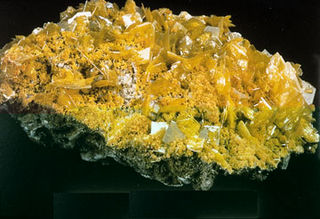Top Qs
Timeline
Chat
Perspective
Tetragonal crystal system
Lattice point group From Wikipedia, the free encyclopedia
Remove ads
In crystallography, the tetragonal crystal system is one of the 7 crystal systems. Tetragonal crystal lattices result from stretching a cubic lattice along one of its lattice vectors, so that the cube becomes a rectangular prism with a square base (a by a) and height (c, which is different from a).
This article needs additional citations for verification. (July 2011) |


Remove ads
Bravais lattices
There are two tetragonal Bravais lattices: the primitive tetragonal and the body-centered tetragonal.
The body-centered tetragonal lattice is equivalent to the primitive tetragonal lattice with a smaller unit cell, while the face-centered tetragonal lattice is equivalent to the body-centered tetragonal lattice with a smaller unit cell.[1]
Remove ads
Crystal classes
Summarize
Perspective
The point groups that fall under this crystal system are listed below, followed by their representations in international notation, Schoenflies notation, orbifold notation, Coxeter notation and mineral examples.[2][3]
Remove ads
In two dimensions
There is only one tetragonal Bravais lattice in two dimensions: the square lattice.
See also
References
External links
Wikiwand - on
Seamless Wikipedia browsing. On steroids.
Remove ads



